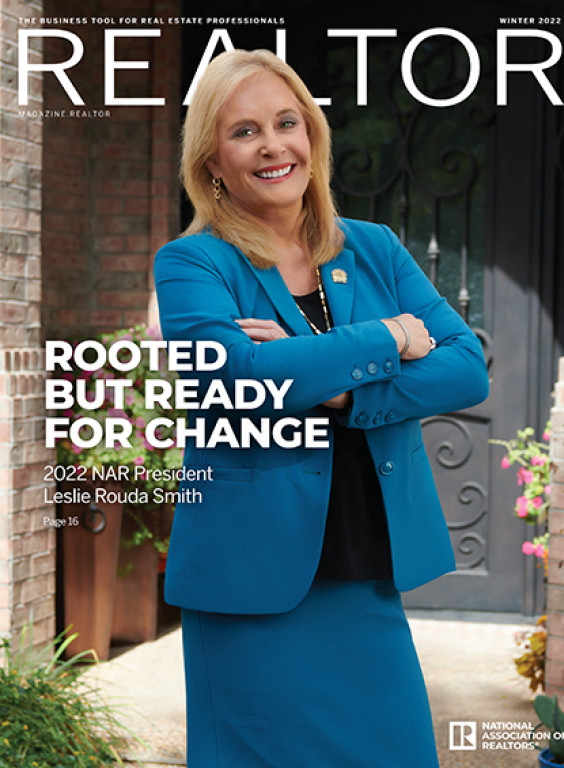A CMA, or comparative market analysis, is more important than ever as buyers and sellers struggle to take the pulse of this constantly changing real estate market. How do you make a CMA useful and accurate when dynamics are shifting so rapidly? The record pace at which homes have been selling and the ongoing tug of war between buyers, sellers, and investors for market advantage can make it tough to land meaningful stats.
You’ll have to do your due diligence and gather the right information to establish the correct home value for your clients. “First of all, be curious. I think every home tells a story,” says Greg Robertson, co-author of The Art of the CMA and head of enterprise sales at Lone Wolf Technologies, a real estate software company. “I think a well-documented CMA is essential. It shows your client that you’ve done your homework.”
Robertson and other experienced real estate experts share a step-by-step blueprint for creating up-to-date and solid CMAs.
STEP ONE: Itemize your listing’s strengths and weaknesses.
When you visit a prospective seller’s home, walk the property inside and out, says Jennifer Russell, associate broker at Berkshire Hathaway HomeServices Verani Realty in Exeter, N.H. Take notes and photos, and list the home’s pros and cons. A home with original features may command a lower value while a property with new windows and a new roof may be worth more. Buyers are typically more attracted to move-in-ready properties, which is why it’s important to factor in these pros and cons. “Many times, the problems are the deferred maintenance,” Russell says.
STEP TWO: Piece together the home’s story.
Collect as much statistical information on your listing and the neighborhood as you can: home deed, property tax information, schools, and local amenities, says Russell’s business partner, Kate Foss, also an associate broker at Berkshire Hathaway HomeServices Verani Realty. “Learn your area, and know such things as whether there’s a new school being built or a highway being constructed in the home’s backyard,” she says.
Using property databases like the Realtors Property Resource®, you can find information such as whether the home is in a flood zone, whether it’s ever been in foreclosure, and property tax trends. RPR® also presents area demographics, mapping, census figures, and mortgage reports. The more data you have, the easier it will be to create an accurate CMA. But be careful how you prepare your price opinion. For example, though you can access demographic data in RPR®, be mindful of fair housing laws when sharing that information. The same caution applies regarding information on school quality. Refer consumers to third-party sources; the data you share in a CMA should speak only to your listing’s objective position in the market.
STEP THREE: Determine appropriate comps.
Do some research on comparable properties. Find out whether there were multiple offers, and pay attention to homes in the MLS marked “pending,” which can give you a clue about the relationship between asking price and sold price in your market, Robertson says. “Be an absolute expert.”
Russell and Foss say looking six to 12 months back no longer suffices when searching for comps. “What’s really relevant is three months out,” Foss says. The most relevant comps tend to be those located within a half-mile or a one-mile radius of your listing and built within the same decade, says Steve Wener, a real estate coach and associate broker at eXp Realty of California in San Diego. But if only a few or no comps match that criteria, “I highly suggest bringing in an appraiser,” Wener says.
STEP FOUR: Evaluate the true benefit of your listing’s features.
Certain home features can add value, but you need to understand the limitations as well. A home may have killer ocean views but, if it’s on a busy street, that has an impact on value, Wener says. “Many times, if the home isn’t an absolute cookie-cutter style, we don’t see that flurry of offers,” Wener says. “You really don’t know how much those unique things about a house will factor into pricing or the amount of the offer.” Robertson suggests asking sellers about features they find useful. “This will help you communicate those special things to prospective buyers.”
“As I’ve heard many times, Zillow can’t smell the cat or hear the dog bark.” —Greg Robertson
STEP FIVE: Explain the impact of property customization.
If your listing is highly customized and there are no comps nearby, search for areas or homes with similar characteristics, Robertson says. Understand how your listing’s layout compares to that of other homes, and factor in property upgrades. Finally, “use your eyes, ears, and nose” when coming up with a value estimate, Robertson says. “As I’ve heard many times, Zillow can’t smell the cat or hear the dog bark.”
STEP SIX: Set expectations early.
Put all your information together and set a benchmark value for sellers. Note the property’s positives and negatives, including features such as pools and fireplaces, which some people want and some don’t. A property’s suitability for children also plays a factor in what some people will pay for a house, Wener says.
Ultimately, the market is defined by what both parties are willing to accept, Foss says. In today’s market, sellers could still get thousands over their asking price. “We just don’t know anymore,” she says.
Wener agrees that no CMA can prepare a seller for what a hypermotivated buyer is willing to do. One of his buyers recently offered $1.92 million on a $1.8 million listing. After the offer was accepted, the listing agent texted Wener and asked if the buyer was 100% committed—because a $2 million offer had just come in. Wener’s buyers were committed and closed on the property with their original offer.
STEP SEVEN: Use the CMA as a marketing tool.
“When printed, the CMA is a great leave-behind item to showcase you and serves as a memorialization of the time you spent together,” says Robertson.





